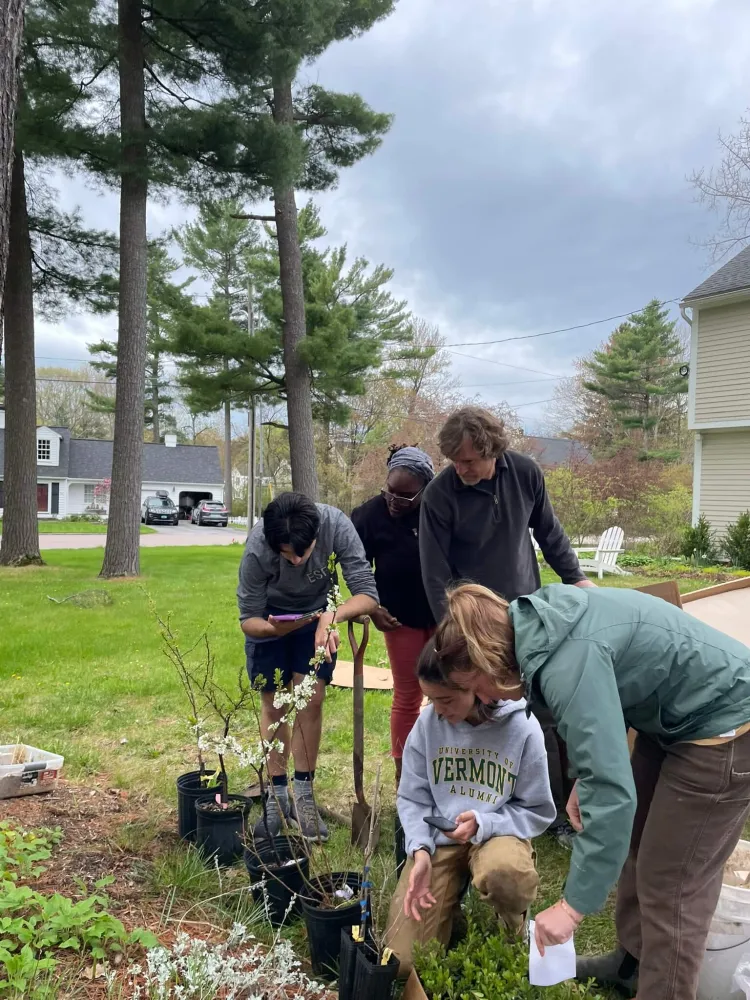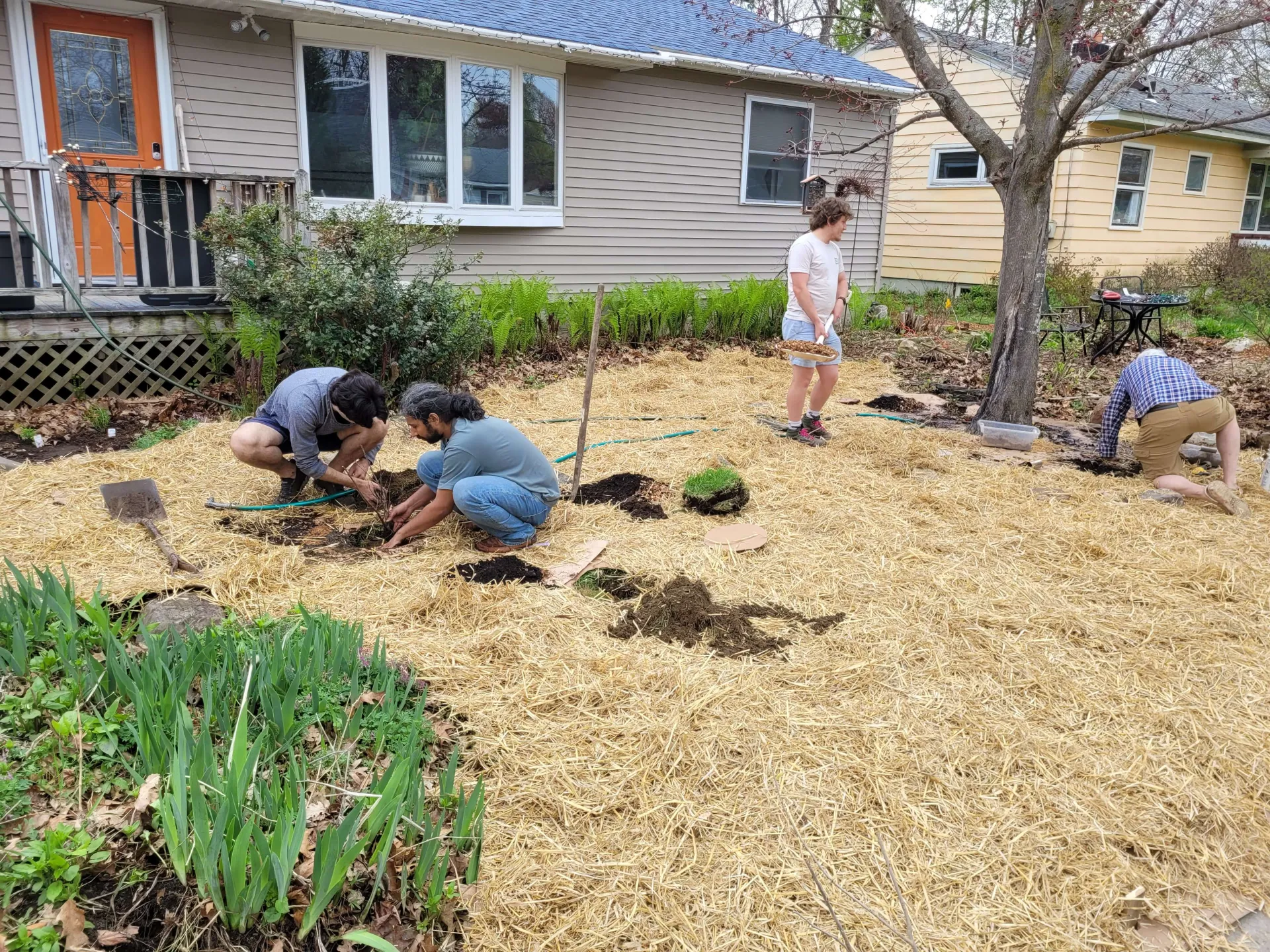On May 10, about 40 students and volunteers headed down to the UVM Horticultural Farm to plant an experimental food forest. Designed by UVM professor Fortino Acosta, the food forest includes hundreds of plants—a mix of fruit and nut trees, shrubs, and ground cover plants. It’ll take a few years to really grow in, but the idea is to test out different techniques and figure out what works best, then share that knowledge with local homeowners who want to transform their lawns.
This is the second year the course has run. It’s a service-learning class, which means the focus isn’t just on learning theory, but also on creating meaningful change in the community. The projects for this course were to 1. Help folks in the Burlington area transform their lawns into spaces that support food production, pollinators, and ecosystem health, and 2. set up a long-term, community-driven food forest that people can visit, learn from, and eventually harvest.

“Lawns are the largest irrigated crop in America, accounting for twice as much land in the lower 48 as our national park system.” said Dr. Josh Farley, UVM professor and one of the course instructors. “Per acre, they use ten times more poisonous chemicals and fertilizers than industrial agriculture. They’re not just unhelpful—they’re actively harming the environment. With this course, we want to shift that mindset and show people how lawns can actually serve their communities, support wildlife, and help the planet.”
Last year, the class conducted a survey asking Burlington residents if they were willing to transform their lawn and their motivations for doing so. Nearly a third of respondents volunteered their lawns for transformation this spring, and still more expressed enthusiastic support for the project. That same class also helped secure funding to support local lawn transformations and the launch of the food forest project that was realized this spring.
This year’s students still had plenty of work to do. Students organized into teams based on their interests: some worked on planting and design, others focused on community outreach, website development, grant writing, or analyzing the economics of lawn conversion. Weaving together theory and practice, the class read pivotal pieces from scholars like Tallamy, Kimmerer, Altieri, and many more to develop the methods and principles that guide this project.
The class culminated in four Planting Days where students, community partners, and volunteers came together to plant over 500 edible trees, shrubs, and native plants. In addition to the planting activities, landowners were also given practical skills and guidance on how to design and maintain similar agroecological spaces on their own properties, helping to extend the impact of the project beyond the classroom.
The course is slated to run again next spring, taught by Professor Josh Taylor, with the many lessons learned from this year. If you’re interested in learning more about lawn conversion, visit American Meadows.

